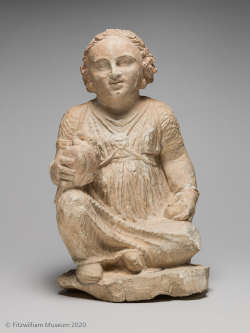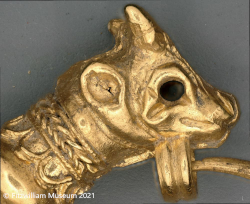
As the project, Being an Islander: Art and Identity of the Large Mediterranean Islands comes to a close, we take a brief look at the project as background to the forthcoming seminar and screening.
For details of the seminar, visit Islanders, the Making of the Mediterranean: a different exhibition narrative. Reflections on an interdisciplinary project
The Mediterranean region has long been a captivating tapestry of diverse cultures, histories, and identities. Within this vast expanse of water, the large Mediterranean islands stand as unique and distinct entities, shaped by their geographical isolation and interconnectedness. Exploring the intricate relationship between art, identity, and the island experience, the research project titled "Being an Islander: Art and Identity of the Large Mediterranean Islands" embarked on a transformative journey from 2019 to 2023.
The "Being an Islander" project sought to unravel the complexities of island identities by focusing on the islands of Crete, Cyprus, and Sardinia. These islands, with their rich cultural heritage, served as compelling case studies to investigate how their geographical isolation influenced their cultural identities in comparison to the surrounding mainland. But this project went beyond the confines of ancient Mediterranean civilizations, delving into contemporary debates surrounding island versus mainland cultural identities, including the intriguing question of Britain's own island identity.
Distinct and Separate
Throughout history, islands have been viewed as distinct and separate entities, each with a unique character separate from the mainland. The concept of "insularity," or belonging to an island, has often been romanticized and associated with otherness. Islands have been considered to have separate histories and distinct socio-political, cultural, and economic characteristics. However, it is important to recognize that islands are not isolated entities but are connected through various networks and relationships facilitated by the sea. This connectivity has played a significant role in the archaeology, art, and history of the Mediterranean islands.
Led by Principal Investigator, Dr. Anastasia Christophilopoulou, Senior Curator of the Ancient Mediterranean at the Fitzwilliam Museum, the project took a comprehensive and integrative approach, encompassing a broad diachronic scope, with the research phase comprised of five areas of investigation: Insularity, Mobility, Metals, Ancient Food and Insular Diet. The phase concluded with the Joint Interdisciplinary International Conference on Island Identities, organised in conjunction with the Ashmolean Museum and taking place in Cambridge, Oxford, and London. The conference also marked the opening of two exhibitions which represented the public-facing phase - in Cambridge, "Islanders: The Making of the Mediterranean" (as part of the Being an Islander project) and "Labyrinth: Knossos, Myth & Reality" in Oxford.
The Making of the Mediterranean
The Cambridge exhibition, which ran from February 24 to June 4, 2023, aimed to explore the factors that shape island identities in the Mediterranean. Focusing on the islands of Crete, Cyprus, and Sardinia, the project investigated how the geographical isolation of these islands influenced their cultural identities compared to the surrounding mainland. The exhibition not only examined ancient Mediterranean civilizations but also incorporated contemporary perceptions and debates surrounding island versus mainland cultural identities, including Britain's own island identity.
The exhibition showcased research findings from diverse scientific fields within archaeology, such as ceramics studies, archaeobotany, and archaeometallurgy. It also incorporated the works of modern artists who contemplate the concept of island belonging. By employing an interdisciplinary lens, the project challenged the notion that "being an islander" is defined by fixed
attributes or characteristics. Instead, it argued that island identity is a fluid and dynamic state shaped by various factors and subject to change over time.
The exhibition invited visitors to reconsider the Mediterranean region surrounding this dynamic body of water in terms of connectivity and mobility. It encouraged a shift away from entrenched disciplinary divides and modern political boundaries, fostering a deeper understanding of the intertwined histories and cultural interactions that have shaped the identities of the large Mediterranean islands.
Documentary
In addition to the two main phases, an initiative funded by the Stavros Niarchos Foundation, under the auspices of the Embassy of Greece and the High Commission of Cyprus in the United Kingdom, added an extra dimension to the project. This initiative aimed to expand the reach and impact of the exhibition through various engaging and educational activities. It included the production of a documentary centered on the Mediterranean Sea, exploring issues of migration and mobility in the Mediterranean past and present. Additionally, digital initiatives such as a Google Arts & Culture Exhibit and a virtual reality (VR/XR) installation provided accessible and immersive experiences for a wider audience. A formal learning program catered to families, young audiences, and disability groups, while strategic partnerships with Hellenic diaspora communities enriched the project by fostering collaboration and knowledge exchange.
Further reading:
Island hopping: exhibition finds connections between ancient cultures of the Mediterranean






